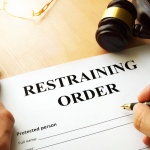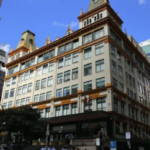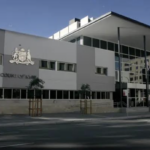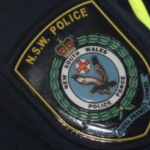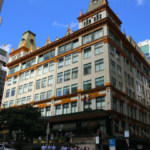Property Recovery Orders in NSW: Getting Your Property Back in Domestic Violence Situations

In cases where Apprehended Domestic Violence Orders (ADVOs) are taken out in New South Wales, the courts and the police have powers to make arrangements for the parties to get their belongings back from one another through what is known as a ‘property recovery order’.
What is a property recovery order in New South Wales?
The property recovery order, or ‘PRO’ allows either a defendant – who is the person against an ADVO is made – or a protected person – who, as the name suggest, is the person considered to be in need of protection – to retrieve his or her personal property from the other’s premises.
A PRO also sets out how the property should be returned and what goods are to be returned.
The police normally accompany the person who is recovering the property to the other person’s premises in order to ensure peace and help to resolve any conflicts over possession.
The legislation
The power to make a property recovery order is contained in section 37 of the Crimes (Domestic and Personal Violence) Act 2007 (NSW), which is headed as follows:
“Ancillary property recovery orders may be made
37 Ancillary property recovery orders may be made”
Subsection (1) sets out that a court or authorised officer, which includes a magistrate, a registrar or any other person authorised by the Attorney Geneneral – can make a PRO, but only when making an ADVO or where an interim ADVO has been made.
It states as follows:
“(1) A property recovery order may be made by a court or authorised officer–
(a) when making an apprehended domestic violence order or interim apprehended domestic violence order, or
(b) in relation to an interim apprehended domestic violence order that has been made by a senior police officer.”
Subsection (1A) sets out the matters of which an authorised officer must be satisfied before making a PRO, stating:
“(1A) A court or authorised officer may make a property recovery order only if satisfied that–
(a) the protected person has left personal property at premises which the defendant occupies, or
(b) the defendant has left personal property at premises which the protected person occupies.”
Subsection (1B) outlines the way in which the order may be made, providing that:
“(1B) A property recovery order may be made under this section–
(a) on the motion of a court or authorised officer when making an apprehended domestic violence order or interim apprehended domestic violence order, or
(b) on the application of a police officer, the protected person or the defendant.”
Subsection (1C) specifies what the PRO must include, stating that:
“(1C) An application for a property recovery order made by a protected person or a defendant must include details of the following–
(a) any relevant order with respect to property made under the Family Law Act 1975 of the Commonwealth (a “family law property order” ) of which the applicant is aware,
(b) any pending application for a family law property order of which the applicant is aware.”
Subsection (1D) prescribes that certain inquiries must be made before making a PRO, stipulating that:
“(1D) Before making a property recovery order, a court or authorised officer is to–
(a) make such inquiries of the parties about any relevant family law property orders as the court or officer considers to be appropriate, and
(b) if any such order is brought to the attention of the court or authorised officer, take the order into consideration.”
Subsection (2) prescribes the nature and scope of the orders that can be made, providing that:
“(2) A property recovery order may do any or all of the following–
(a) direct the person who occupies the premises concerned to allow access to the premises to the person who has left the personal property at the premises (and any police officer or person who is authorised by the order to accompany the person) to enable the removal of the property,
(b) provide that the access to the premises concerned is to be at a time or times arranged between the occupier of the premises and a police officer (whether or not the order requires the person recovering the property to be accompanied by a police officer),
(c) require the person who has left the personal property at the premises to be accompanied by a police officer when removing the property from the premises,
(d) provide that the person who has left the personal property at the premises may be accompanied by any other specified person,
(e) specify the type or types of property to which the order relates.”
Subsections (3) contains a prohibition on the use of force in the carrying out of the PRO, making clear that:
“(3) A property recovery order does not authorise entry to any premises by means of force.”
Subsection (4) sets out that a PRO does not confer property rights or interests on any party, stating:
“(4) A property recovery order does not confer any right on a person to take property that the person does not own or have a legal right to possess even if the type of property is specified in the order.”
And subsection (4) prescribes a requirement that a PRO for property left by a defendant can only be made in his or her presence:
“(5) A property recovery order in respect of personal property left by the defendant on premises may not be made in the absence of the defendant.”
Understanding the rules
So, the legislation paints the rules relating to PROs with a broad brush, but it can be helpful to clarify as well as elaborate on those rules as well as look to case law where there is uncertainty.
A property recovery order is ancillary to an ADVO
In that regard, it is important to understand that a PRO is ancillary to an Apprehended Domestic Violence Order.
This means an application for PRO cannot be made in its own right – it can only be made at the same time that a Provisional, Interim or Final ADVO is made.
It also cannot be made after an ADVO case has been finished, nor in relation to cases of Apprehended Personal Violence Orders (APVOs) – which are those whereby the defendant and protected person are not in a relationship considered to be a domestic one under the law.
Applying for a property recovery order
An application for the PRO can be made by either the police, the protected person (or PINOP) or the defendant.
Before applying, a list needs to be prepared which includes the items sought, such as clothes, shoes, personal documents, children’s belongings, etc.
The application, together with the list, is then lodged at court and the Magistrate makes the orders.
Nature and scope of orders
As is made clear in subsection 37(2), the PRO may:
- Direct the occupier of the premises to allow access and remove the relevant property,
- Direct the parties and police arrange a suitable time for recovery,
- Require the person who seeks to recover the property to be accompanied by a police officer and/or another specified person during that process,
- Specify the property to which the order relates.
It follows that a Magistrate has the power to make an order which encompasses all of the items listed, some of them or none of them; and he or she may exclude items the ownership of which is in dispute.
A property recovery order does not confer property rights or authorise use of force
A PRO does not confer any rights on a person to take property that the person does not own or have a legal right to possess, even if the type of property is specified in the order.
Nor does the fact a PRO authorises a person to take property mean the person then has a property right (such as ownership or a right to possess) that he or she would not have but for the PRO.
It follows that a person who takes something which he or she knew was not his could find themselves facing property charges such as larceny (a form of stealing) despite the PRO encompassing that property.
The PRO also does not authorise entry to any premises by means of force. As such, any person who uses force while purporting to carry out orders contained in a PRO could find themselves facing criminal charges such as breaking and entering, criminal trespass or assault.
The offence of contravening a property recovery order
Subsection 37(6) of the Act provides that, “A person must not, without reasonable excuse, contravene a property recovery order or obstruct a person who is attempting to comply with a property recovery order.”
There is no list of what may amount to a ‘reasonable excuse’ in the context of the offence, and the person who is accused of contravening the PRO bears the onus of proving ‘on the balance of probabilities’ (ie that it was more probable than not) that he or she had such an excuse for the conduct.
The maximum penalty for the offence of contravening a PRO is a fine equivalent to 50 penalty units.
At the time of writing, a penalty unit for a New South Wales offence is equivalent to $110, which means the maximum fine for the offence is $5,500.
Inconsistency between property recovery order and ADVO conditions
It is important to note that a defendant cannot be cannot be found guilty of the offence of contravening an apprehended violence order for complying with the conditions of a PRO.
So, for example, if a condition of the ADVO is that a defendant must not approach or enter the protected person’s premises, the defendant will not have contravened the condition by complying with the PRO by attending the premises.
Appealing a property recovery order
The law relating to appealing a PRO is not clearcut, and was considered in the NSW Supreme Court case of Franks v Franks [2012] NSWCA 209.
The judgment of Justice Basten in that case, with whom Justices Barrett and Hoeben agreed, can be summarised as follows:
- There is no statutory right of appeal to the District Court. The power to appeal under the Crimes (Domestic and Personal Violence) Act only covers the AVOs and does not extend to the PRO (note above that a PRO is an ancillary order to an ADVO). [para 6 of judgment]
- There is also no other right of appeal to the District Court from the Local Court.
- Therefore, the only option to appeal is to the Supreme Court under its general supervisory powers.
- Although the case did not go further given the circumstances of those proceedings, the following are clear from the judgment:
- Having an order made without the applicant being given an opportunity to oppose it ties into denial of procedural fairness in the Local Court.
- If the order was not made at the time of issuing an apprehended violence order could also invalidate the order.
Going to court for an apprehended violence order?
If you are facing an application against you for an apprehended violence order, call Sydney Criminal Lawyers 24/7 on (02) 9261 8881 to arrange a free first conference with a specialist defence lawyer who is vastly experienced in defending and winning AVO applications, whether or not they are accompanied by associated criminal charges.

